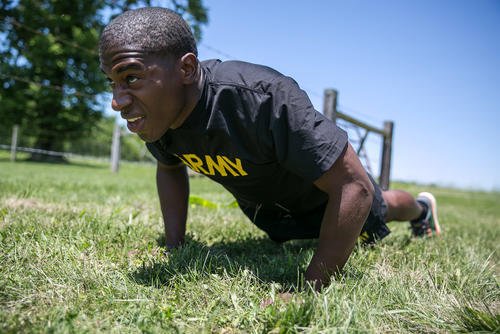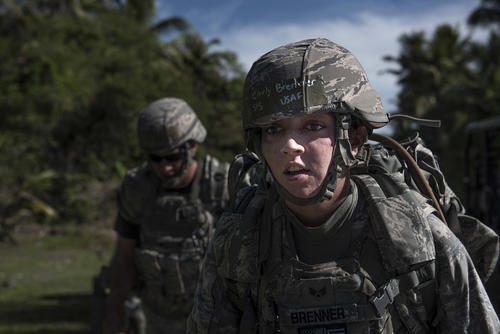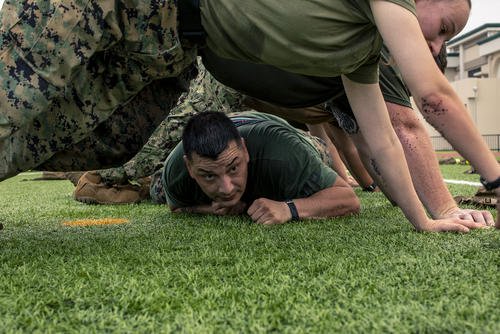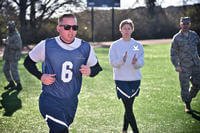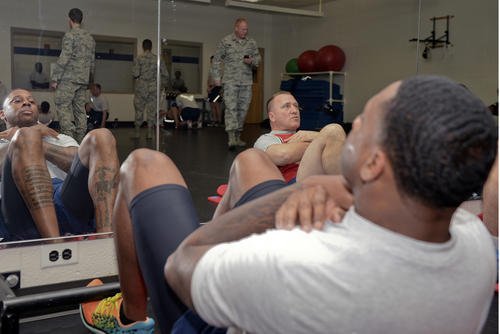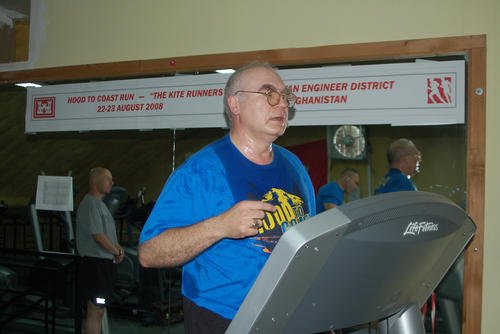Summer sports and military training are both susceptible to heat casualties. While the quickest way to end your athletic or military training is to show up dehydrated in the summer heat, the good news is that day-ending or life-threatening consequences can be avoided with basic preparation.
Many special operations dreams have been squelched in the heat of rigorous physical activity during selection, just as it occurs in basic training or boot camp. Whether you are playing recreational sports or preparing for deployment in hot environments, it is essential to incorporate a progressive acclimatization period to the heat and be prepared for rehydration and emergent cooling.
The Process of Overheating, Cooling and Your Performance
When you exercise in very warm conditions, your body works double time to generate energy for performance and dissipate excess heat. These two functions do not assist each other well for optimal performance; you must help by learning how to train in the heat. Cooling before, during and after workouts enables you to fight fatigue, as nearly half of your fatigue is related to body temperature.
Read Next: The 5 Most Effective Push-Up and Pull-Up Workouts
Ordinarily, your body sends warm blood to the skin, sweat beads on your body, and our built-in "air conditioning" systems allow for cooling to begin. However, as the heat and humidity increase and your performance lasts for more extended periods, this process becomes less efficient.
Sweating and Dehydration
With prolonged activity in hot (and especially humid) environments, sweat loss often exceeds fluid intake, leading to dehydration. As little as a 2% reduction in body weight due to fluid loss has been shown to affect performance and cognitive function negatively. Depending on your sweat rate, this can occur in less than an hour for some individuals.
Rise in Core Temperature
Every movement increases your core temperature. In the heat, this process escalates much more quickly. Our brain signals for more blood from the body's core to be redirected to the skin for cooling when exposed to heat. This reroutes blood from working muscles, affecting oxygen flow to them and the removal of byproducts of exercise, such as carbon dioxide and lactic acid, from them. If not addressed with water, electrolytes and cooling (even for a few minutes), cramping, heat exhaustion and heatstroke soon follow.
Overworking the Heart
As dehydration sets in, your heart is unable to meet the body's oxygen and cooling demands, so it works harder to maintain basic functions, let alone excel.
Working in the Heat: From Discomfort to Danger
Training in the heat is not the time to test your mental toughness. While such conditions add another layer of discomfort that will test your resolve, you should gradually build up your heat tolerance over time and establish a progressive limit to training time in oppressive situations between cooling and rehydration sessions. The process starts with uncomfortable cramping in the extremities before building to full-body cramping and confusion.
The warning signs include:
- Profuse sweating at first, then the absence of sweating
- Cramping, dizziness or confusion
- Skin discoloration (flushed red to pale/bluish color)
- Rapid heart rate
- Headache
- Nausea or vomiting
- Collapse
Immediate cooling and hydration are essential in these situations; however, being prepared to prevent them requires thoughtful planning and constant cooling strategies.
Cooling Strategies
Despite these challenges, athletes, coaches and military instructors aren't powerless. Research has revealed practical and effective strategies for training -- and even thriving -- in hot environments. Here's how:
Progressively Get Used to the Heat over Time
Heat acclimation refers to the process of gradually increasing exposure to hot conditions, allowing the body to adapt. Typically, this takes a week or two, lengthening the duration of training and adjusting the temperature by varying the time of day to train. Start in the early morning when temperatures can be 20 degrees cooler than the heat of the day, and gradually extend training into the warmer hours.
The benefits of doing this over a one- to two-week period are that you can make the body's cooling systems more efficient by sweating more quickly and profusely than before.
Smart Hydration/Electrolytes (Not Just Water)
Hydration is more than just drinking water. It's about timing, quantity and maintaining electrolyte balance when sweating:
- Preload fluids: Begin exercise well-hydrated. Drink steadily throughout the day and check urine color (pale/no color is ideal).
- Drink during the activity: For sessions lasting more than an hour, sip water or sports drinks regularly. Weigh yourself before and after exercise to gauge fluid loss, aiming for no more than a 2% drop in body weight.
- Replace water and electrolytes: Minerals such as sodium, potassium and chloride are lost in sweat. Sports drinks or salty snacks can help replace these, reducing the risk of cramps and hyponatremia (dangerously low blood sodium). A guideline is to drink 20 ounces of water for every pound lost during activity. Do not chug to catch up; drink that amount over a few hours (with added electrolytes).
Cooling Strategies that Can Save Your Life
Lowering core temperature before, during and after exercise can offset performance declines, limit the effects of extreme heat and prepare you for the following training days. Try these useful tools and activities:
- Pre-cooling: Consider incorporating cold-water immersion, ice vests or chilled beverages into your pre-training or pre-competition routine. Wear a cold, wet shirt to help cool down in hot weather. These measures blunt the rise in core temperature and may increase the time before exhaustion.
- Mid-exercise cooling: During breaks, use cool towels, pour water over your head or take advantage of shade, fans and air conditioning to cool down. Hold a cold bottle of ice water in your hands when taking a break from the action.
- Light clothing and sunscreen: Wear light-colored, moisture-wicking fabrics. Choose large hats with airflow. Apply sunscreen to minimize heat absorption and skin damage.
- Plan immediate post-exercise cooling: For instance, our local training group will run or ruck for 30 minutes during the heat of the day but will swim for an hour immediately afterward. Ending a hot day of activity in a cool pool is a quick recovery tool.
- Consider new cooling technologies and some old-school ones: Wet your shirt in cold water and put it back on, or place ice on your neck, hands and in armpits to help cool you down. Or you can use a device like the CoolMitt (coolmitt.com), which is designed to help you recover from the heat quickly by using heat receptors in your hands.
For best results, schedule workouts during cooler times (early morning/evening). Listen to your body; don’t ignore early signs of heat illness. Make sure you have a training buddy for safety, and pre-hydrate, hydrate during the event and rehydrate after any heat workout.
Also consider adjusting expectations. Personal bests may not be achieved in the heat as easily as in cooler times of the day. Make sure to pace yourself and prioritize health over performance.
Related: Training Indoors During Summer Heat
Want to Learn More About Military Life?
Whether you're thinking of joining the military, looking for fitness and basic training tips, or keeping up with military life and benefits, Military.com has you covered. Subscribe to Military.com to have military news, updates and resources delivered directly to your inbox.







